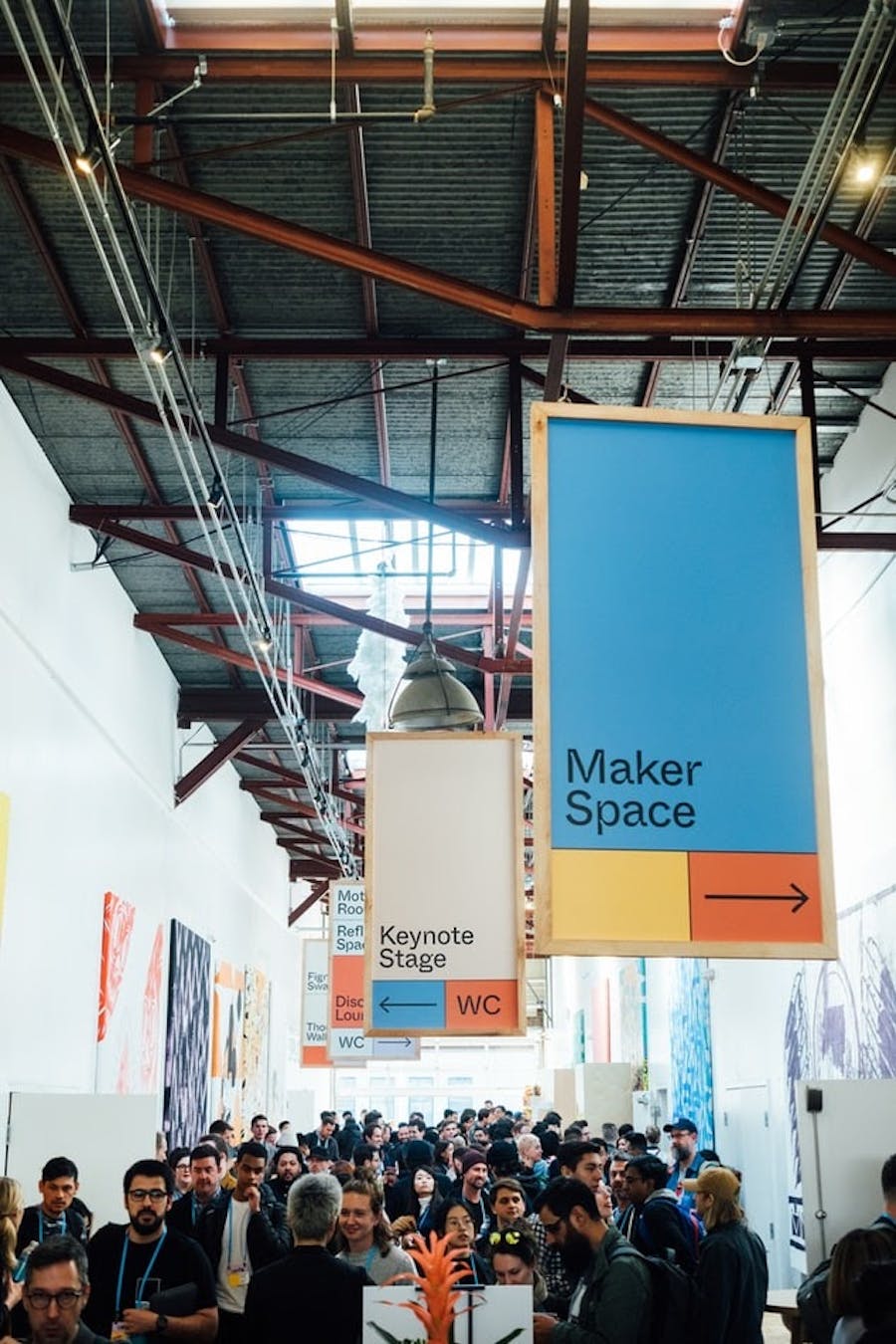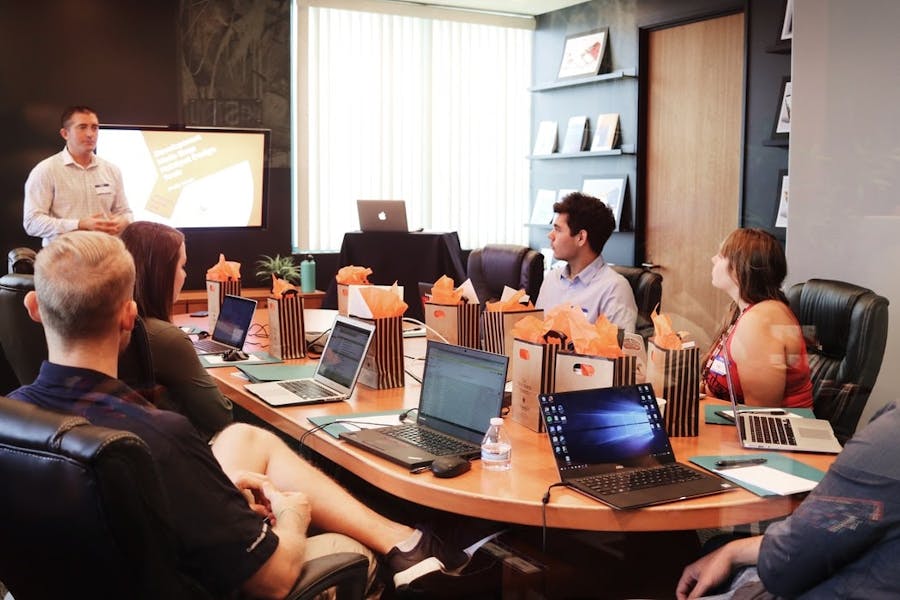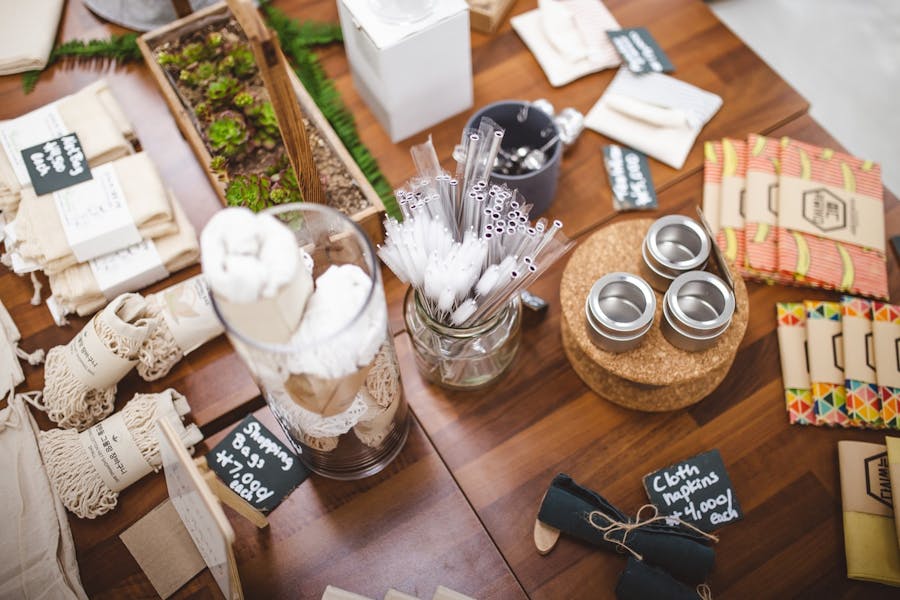B2B tradeshows and forums, congresses, and conferences are among the events whose success is difficult to evaluate, both because of the number of attendees (virtual and on-site) and the number of exchanges and interactions during the event, which are difficult data to measure.
Tradeshow potential clients have two main goals: to measure the market novelties (query for information), and second, to make new deals with partner companies and prospects while increasing the awareness of their brand.
The stakes are high and there is a lot of objectives to achieve!
One of them is to generate monetary revenue and brand value via :
- The sale of stands/participation fees
- Sponsorship sales
- Derived sales (beverages, catering, etc.)
- Upsells (VIP areas, checkroom, business meetings, evening events)
- Organization of trophies and prize-giving ceremonies
- Networking sessions between the different participants, so that they find added value and come back every year (customer loyalty)
- Ensure the awareness of the show
- Satisfy stakeholders (exhibitors, partners, attendees)
It is of course important to think about the global strategy of your event, from marketing to logistics, including communication and content.
Generate revenue
Among all the sales-related items (detailed below), it will be appropriate to conduct an analysis on revenue and margin.
To do this, we offer several examples of general metrics, and then KPIs by line item, more specific to the relevant results in that line item:
General KPIs for revenue-generating positions in a B2B show:
- The growth rate compared to previous editions:
(Revenue generated by booth sales (item #1) in year N / Revenue generated by this same item in (N-1) x100 - Share of the item in the total revenue generated:
(Item revenue / Total show revenue) x100 - The income made in relation to the initial objectives: in order to compare the income to an objective, it is necessary to define this objective beforehand:
(Income of the item / Forecast objective of the item) x100
You will obviously have to prepare an Excel file (or even better, a shared Drive!) to monitor these KPIs before the event. This will help you be "data-driven" and to ensure your ability to make an efficient and objective assessment.
1. Generate revenue through exhibitor booth sales
To measure the effectiveness of this objective as a tradeshow organizer, you can use one of the following indicators:
- Completion Rate:
(No. of booths sold / Total No. of booths for sale) x100. Calculate in volume and value. - Exhibitor renewal rate: (Number of new exhibitors / Total number of exhibitors at the show) x100
Don't hesitate to "Upsell" your booths to generate extra revenue: offer a carpeting option, premium wifi, coffee machines, host and hostess services. The higher the quality and performance of what you offer, the more easily your Upsells will be sold.
You can take inspiration from yield management techniques and pricing techniques in the hotel industry (or in the airline industry).
2. Generate revenue through sponsorship

The objective is to have the event sponsored by several sponsors and to value the gain of notoriety brought to the sponsor by the contribution of visibility for its brand (in short, an exchange of visibility / digital marketing against payment).
With this strategy in mind, make sure to create an effective sponsor package and find the relevant sponsor whose marketing department would really benefit from a win-win partnership to reach its prospects.
Do not hesitate to contact your sponsors to better understand their motivations (awareness, leads, performance, content promotion, promotion of a specific offer ...) and their target customers. Find sponsors on sites like Sponsor My Event and create sponsorship packages associated with these objectives and customer targets.
Sponsorship does not have to be limited to an exchange of visibility for a fee. Don't hesitate to be creative in structuring your partnerships (for example a simple Linkedin post can bring you visibility!).
Note that the more sponsors there are, the less visibility there is for each of them! So be careful not to oversaturate your event.
Set a maximum number of sponsors (depending on your number of attendees) so that your sponsorship does not lose value.
Once this is done, there are several key elements that can be measured to ensure that the sponsorship is working well and that your partners will be satisfied with the business you bring them:
- Exposure rate per sponsor:
(Audience exposed to sponsor view / Total audience) x100 - Sponsor Quota:
(Number of sponsors / Maximum number of sponsors) x100 - Revenue Quota:
(Current Sponsorship Revenue / Maximum Sponsorship Revenue) x100 - Sponsor renewal rate:
(Sponsors present this year who were also sponsored in N-1 / Total sponsors) x100
Finally, as for the booths, you can also use upsell strategies in your sponsoring: offer access to a paid VIP lounge, a short sponsored video at the beginning of your event, a banner ad in the communications of the show (emails, magazine, brochures...) The possibilities are (almost) unlimited!
3. Generate revenue through catering services
The main example is catering at a physical exhibition: you can offer a complimentary catering service.
Here too, you can set up a partnership, for example by bringing in a starred chef, who will see his reputation grow and your attendees will want to experience the service.
Here, the KPI of the success of the caterer is rather simple to measure, count the number of empty plates! :)
4. Generate revenue via sub-events within the event
You can also organize a private party on the sidelines of the main event. This is a great opportunity to skim the surface and create a light-hearted atmosphere to create an informal bond between attendees.
Monetize this event by sending invitations to your most reputable attendees, or to those whose main objective is to network with the important people of your event.
To manage complex registrations and check-ins, such as access to a VIP lounge, Digitevent has designed a specific solution for organizers of tradeshows, forums, and professional meetings.
- To measure the success of these sub-events:
(Number of VIP lounge seats sold / Maximum number of seats) x100
It is important to take care of every aspect of this additional experience: bar, music and warm atmosphere, discussion areas and meeting areas, etc...
5. Use an exhibitor lead collection app
You can sell your attendees access to the badge scanning application. This application allows you to automatically record and retrieve data from an attendee's badge with a simple scan of the QR code on the badge.
Measure the success of this application by simply observing whether exhibitors scan their QR codes with each other, or by measuring the sales success of this feature.
6. Organize a trophy and awards show
Awards shows are a great way to generate revenue: your show attendees can compete with each other for different awards (and the pride of posting that award on their websites/social networks... advertising your show at the same time).
Moreover, depending on the size of your show, the awards associated with it will become more and more recognized. It is therefore likely that your exhibitors will be willing to pay to compete.
These awards can generate interesting content for your corporate clients: you could also consider selling them these award replays.
You can also monetize some exclusivities, such as the possibility to distribute goodies during the event.
Create networking between attendees

The objective is to create a maximum number of exchanges and networking between participants. Some key indicators will mean the difference between the success and failure of your event (especially in B2B).
- Meeting rate per attendee:
(Number of appointments obtained / Number of attendees)
This rate is important because the higher it is, the more useful and easy to use your appointment setting feature was and the more value it gave to your attendees. Conversely, the lower the rate, the more disappointing the experience for your attendees and the more likely they are to leave with frustration.
With Digitevent, you can calculate the average number of relationships created at a virtual event as well as at a physical event.
- Meeting acceptance rate:
(Number of appointments accepted / Number of appointments offered) x100 - No-show rate:
(Number of no-shows / Number of registrants) x100
Don't forget that you can monetize all these appointment and matchmaking features with your exhibitors or sponsors, as we have seen previously in the idea of creating several sponsor packs.
Indeed, our networking tool allows you to generate virtual rooms for each meeting, while an intelligent meeting book allows your guests to make appointments with other attendees. Finally, our Live Event interface allows you to filter the types of activities and highlight the different sponsors of the event.
After the event, send a satisfaction survey on the perceived quality of the meetings you offered during your show or conference.
Ensure the reputation of the show
Obviously, the more reputable a tradeshow or conference is, the less effort there will be to find exhibitors, who will rush to reserve the best stand as soon as the participation registration is opened.
In order to boost the awareness of your event, we advise you to use a communication agency that will increase your reach of target segments.
To measure your awareness objectives, we recommend that you set realistic objectives beforehand, such as X% of my attendees must follow me on social networks.
Then, after the event, you will be able to compare your numbers with your pre-event objectives and draw the appropriate conclusions (insufficient awareness, too little value-added? Or on the contrary, exceeded expectations, excellent customer satisfaction).
Tools such as mention.com will help you measure the number of quotes your website has received, including press coverage of your B2B tradeshow or conference.
Global experience satisfaction

After the event, it is key to collect feedback from all stakeholders. This will help you with the continuous improvement process at each edition of your show.
For your post-event satisfaction forms, we recommend using the Likert statistical scales, which will give you a clearer picture of the overall satisfaction of your participants.
When writing your questionnaire, don't forget to address each typology: your exhibitors, your sponsors, your participants. You will therefore have to write three different satisfaction questionnaires!
If you want to do things right, you may need to make about fifteen calls with several participants, sponsors, and exhibitors to get feedback on the show in a live telephone exchange.
Your exhibitors are the heart of your B2B show. As your main source of revenue, but also the ones who will bring all the content and novelties to your show, you must make them happy at any cost if you want to make your show (or conference) a success.
To do this, as we said, provide them with a clear idea of who will be coming to your event (number, demographics, hierarchical level...).
To measure the satisfaction of the exhibitors at your show, we suggest a simple indicator: the retention rate. This indicator assumes that if an exhibitor wants to do business with you again next year, he/she was satisfied.
- Exhibitor renewal rate:
(Number of current exhibitors who were also there in N-1 / Total number of exhibitors) x100
Conclusion
If you are a B2B conference or tradeshow organizer, you could create a dashboard that would include all of these KPIs in order to have a real-time follow-up of the progress of the different aspects of your event.
This way, you will have a maximum of visibility and will be able to anticipate with accuracy your advance (or your delay) in relation to your objectives.
You want to organize a B2B tradeshow or conference in the next few months? Talk to a Digitevent project manager who will be happy to help you with the technical possibilities of your project.




